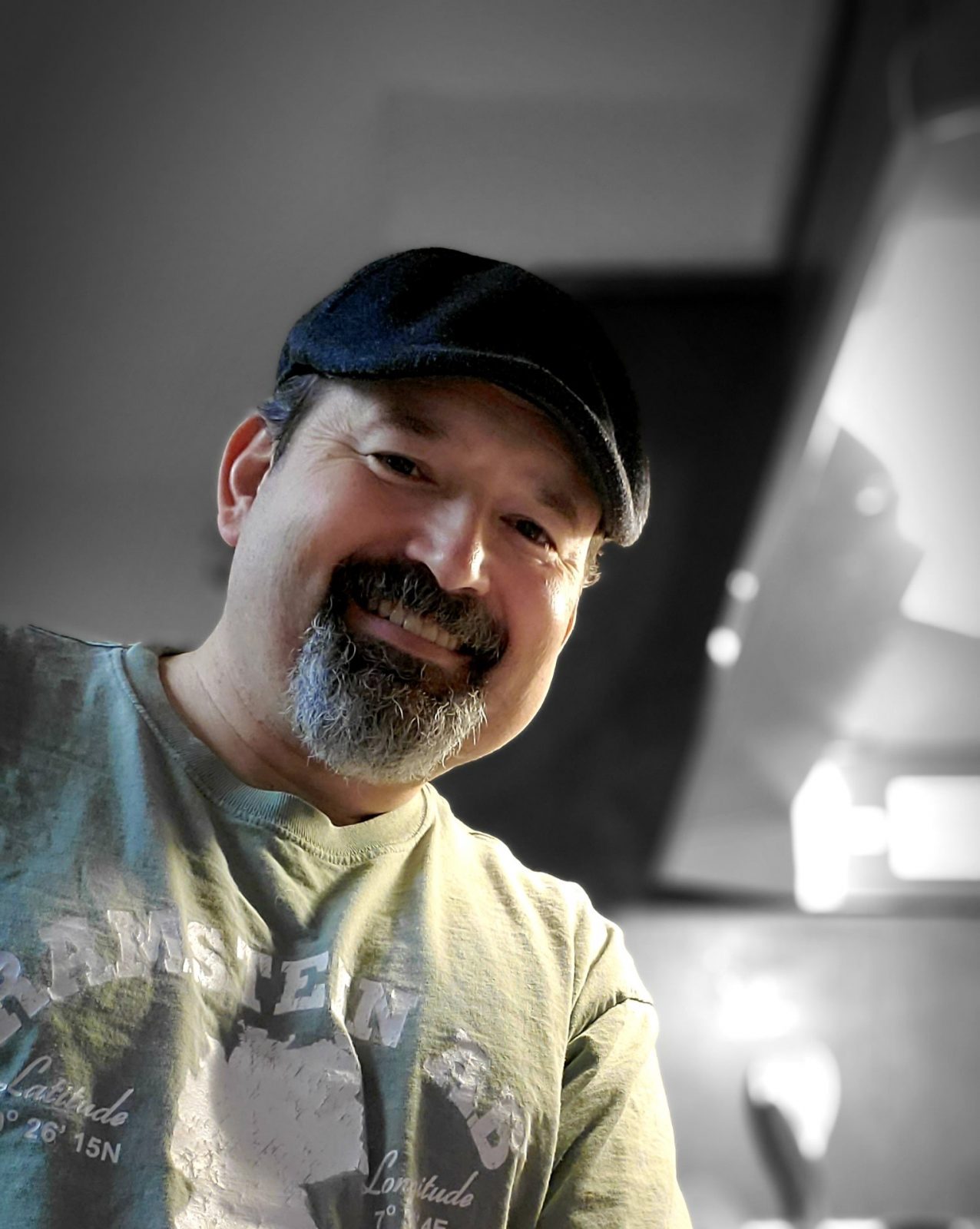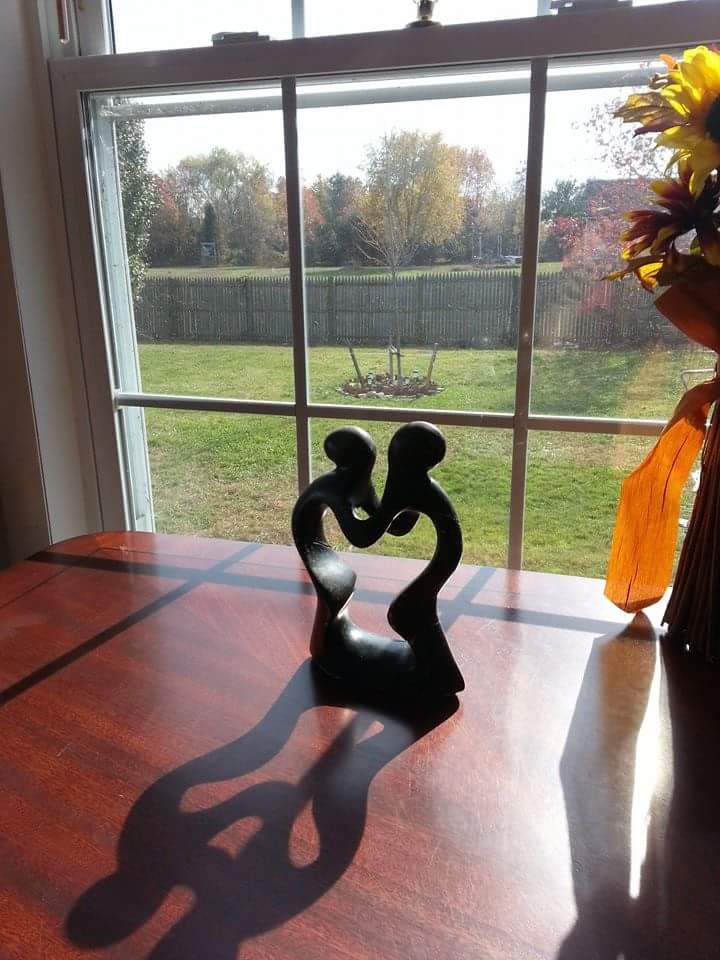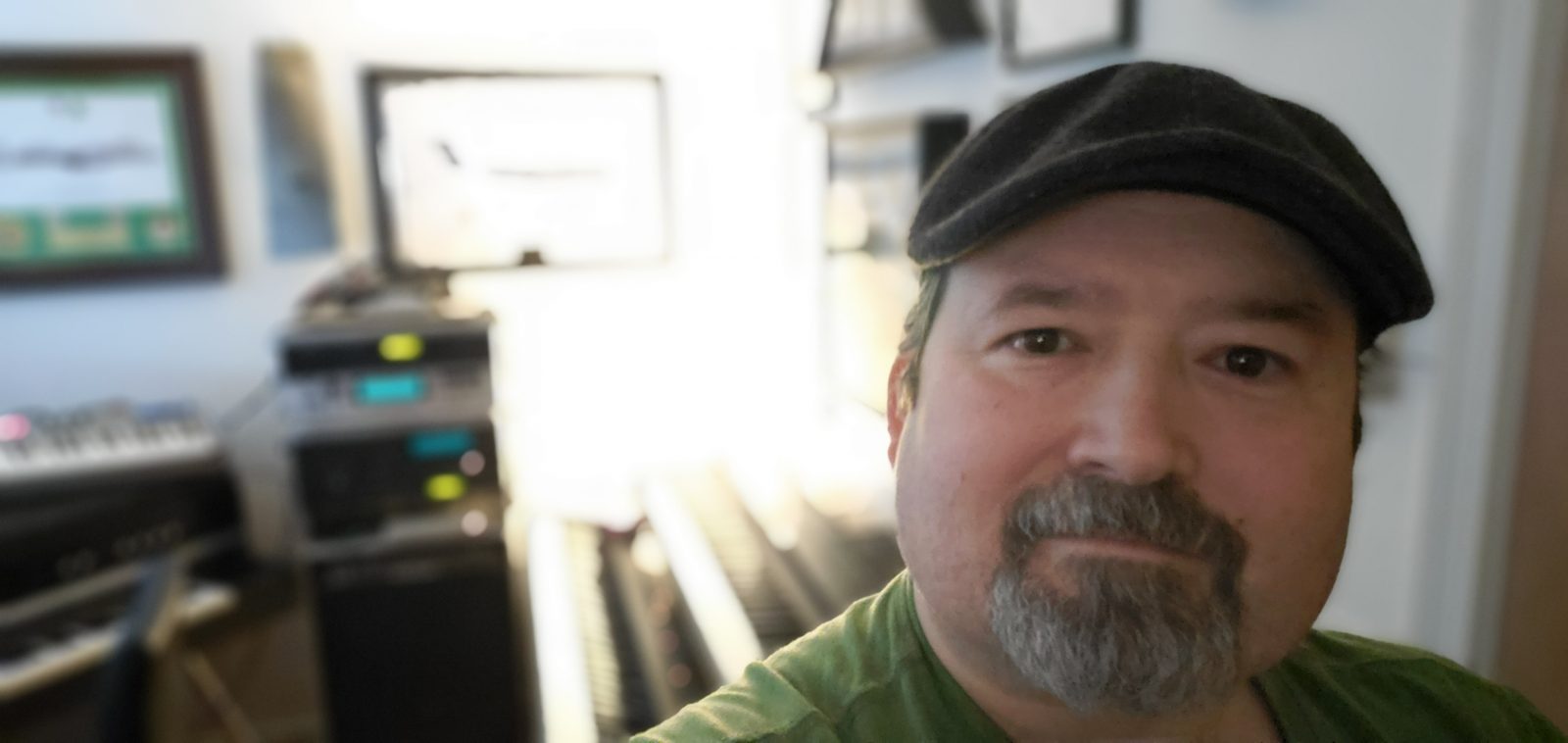Artist/ Band Name : Michel Kasday
Music Genre : EDM
Other Music Genre : Chill Instrumental
Website or Social Media Page
https://www.facebook.com/mikekasday
Youtube Link To My Video
https://www.youtube.com/channel/UCW_ediwMbJcYcbN5cDLXmdg
Links to Where My Music Can be Purchased
Optional Social Media Links
https://www.facebook.com/mikekasday

BIO
Michel began his musical journey in 1982 on piano, playing classical, but soon discovered pop, jazz, R&B, Funk, Industrial, and Electronic. He wrote and performed the music for his first professional studio demos in 1989, and 1991. Gigged in Las Vegas, Reno, and Tahoe. Joined the AF in 1999, and served until 2019, gigging with musicians in the military and civilians located near where he was stationed throughout his career. In the AF he gigged in San Francisco, Marin, UAE, Korea, and in the North East.
He officially started producing his own music as early as 1987 in his home studio. He began learning music theory from his mentor Saxophonist, Eddie ‘King’ Bartel, from 1988-1992. ‘King’ recorded on his demos, and played an influential factor in Michel’s musical influences. He started experimenting and recording his own music as early as 1985, though none of it has survived, his first multi-track recordings were done using two cassette players while adding parts manually on his first keyboard, 1985. No mixer, just a keyboard and a quiet room (hopefully.) Then later in 1988, he had begun to use MIDI sequencing using Cakewalk 2.0 on MS-DOS and an 8088PC still mastering cassettes… In the early 90s, he shifted to Windows, though his computer and audio interface recording capacity was not up to the task for lengthy reliable true CD-quality recordings. Part of his problem was his computers were usually hand-me-down systems that he would Frankenstein together. They were fine for everyday use just not enough RAM capacity to continuously record for more than a few minutes of CD-Quality audio. In 1995 he began saving for a Kurzweil K2000S which by the time he saved enough in early 1996 took the form of a K2000RS (rack-mounted synth versus the keyboard.) The power of the K2000 allowed him to sample enough analog and acoustic content that he did not require a DAW to produce full songs with vocals. Though he still had his original problem, that he couldn’t master those multi-track works on the K2000 to CD yet.
During his time in the AF, he would eventually have the ability to produce CD-quality mastered recordings (2002) as well as reconnect with the Cakewalk ecosystem. Up until this time he was using the K2000 for all aspects of producing music. Upgrading to Cakewalk Pro-Audio 9 allowed him to tap into sequences he recorded over a decade earlier and the sounds he used with the addition of rack versions of keyboards he prior to, no longer had.
Water water everywhere…
His studio was now able to do fully mastered CD quality but his new problem was time. The growing family require more of him as was his work, and he was gigging a lot for functions related to his work. Joined bands off base and enjoyed the music he was playing, albeit 99% covers. When he started working with a Drummer named Gary James, he found in Gary a solid percussionist that was open to Michel playing bass on the keyboard versus having to have a bassist. The first couple of times that they played this way, Michel hadn’t dialed in his bass sounds enough to be convincing. Gary asked Michel if he could make the bass stand out more in the mix, and he did. Now Gary could hear the bass licks that he was missing out on. They found a grove, and Michel who was no longer gigging with bands off base due to his family and work demands would jam often with Gary. One day in 2006 he recorded almost an hour of Gary practicing, working on his technique or complicated evolving rhythms. Gary who was older retired almost a decade before Michel and moved to Colorado. They remained close on Facebook and would share their works. Michel was now convinced that he just needed a percussionist that was open-minded to this band setup. When Michel added the Alesis Micron to his setup he now had a small keyboard that he could take on deployments, and it was able to provide percussion that would evolve to his playing. One major drawback to the Micron was it mainly was good at producing analog keyboard sounds and rhythms that were geared for EDM and not acoustic sounds like a real piano or acoustic drums, which is Michel’s goto, thinking instrument, and having real-sounding drums was helpful in the creative process. His Kurzweil had great drums but was not as flexible in the evolving situations that occur during live performances. Playing to sequences boxes all of the players into the length and style of every part of the song. Triggering rhythms that loop are okay if they are triggered at the right times. The Micron allows the different beats to gel together, just like a real drummer would. Since Michel found himself away from home often and with only the Micron, and an extra 37-key MIDI controller keyboard, to extend the range of the playable keys at one time, he started focusing on getting more out of the Micron in the piano department. Late in 2013, his younger son passed away, this was devastating for everyone in his family. To keep himself mentally distracted he found the Micron’s portability key in allowing him to work through his grief where ever he was. He decided to ‘make’ a piano that sounded enough like a piano that he could compose using the Micron, the way he would on a piano. The loss of his son affected so much of his mind that he was not the same person he was before the loss, and he suffered setbacks in his AF career.

Music and time with his family were what he focused on when not at work. At work, he was there in every capacity minus the part of him that was striving for promotion. His peers advanced to higher ranks and responsibilities, while Michel was focused on his whole family reaching a ‘new normal’ together. When he wasn’t spending time with the family he was obsessed with dialing in that elusive piano sound on his Micron. Finally, after three years and a hundred and fifty versions, he found a sound that worked. In late 2015, Michel was working on fully integrating the Micron with the rest of his keyboard rig to expand what he could play all at one time, live. The Youtube video ‘Comfort Zone, One-take’ was his first fully realized and captured recording using drums that were more than a repeating beat unchanged, and a version of the Piano sound that was getting closer to its eventual target. In 2016 while deployed to Korea, he finally dialed in the piano enough that he felt it was ready for being in the foreground vs adding to the tone of other piano sounds. In 2017 he recorded “Precious” like with Comfort Zone video, he recorded himself playing all the parts in real-time, and then edited all the video content in post edit, leaving the audio unchanged from the original. Precious was the first song to have the Micron Piano sound as a focal instrument. He had acquired the Alesis VI49 controller which came bundled with Ableton Live and a software synth that he used to guitar sounds and the percussion which like the Micron responded to Michels’ playing.
Push-back from tradition…
While Michel was still in the AF he would still gig. He enjoyed working with other musicians but had a hard time connecting when there was already a bassist. Michel had become a bassist on the keyboard and thought of himself as mainly a bassist that plays keyboard parts. He was not being confrontational towards what he considered his fellow bassists, he just needed to play something that was relative to bass or the rhythm with his left hand in order to play the rest of his parts. He had found bassists that would solo on the bass making the combination of Michel and the bassists he was working with, expanding the role of bass beyond being just the framework of a song, but interacting and blending seamlessly with other instruments and adding rhythmic depth.
Acceptance of going it alone…
His time available for practice was not sufficient to keep the bands he was jamming and gigging with satisfied, so he backed out of the bands, and back into the studio. Now he was confronted with the reality that he was no longer the musician he was when he started that would record tracks and produce songs he could never play live on his own. He was this other type of musician that created music as it happened, or create performances that were solely focused on being completely live.
Growing acceptance…
While Michel had recorded other songs that were based on this formula of ‘play play play,’ until you have a song that has something about it worth replaying and learn to play it over and over. There were still aspects of the recordings that sounded less structured or less overall because he was still mainly playing on a couple of physical keyboards during the recordings. The one stand-out song thus far for him was ‘Comfort Zone, One-Take,’ it was unique that he had more of his whole setup available to play and split up enough sounds across the keyboards to reproduce all or most of the tracks in the original MIDI sequence from over twenty years earlier. He had an idea that he should go all-in on the concept and set up his Yamaha CP-70 electric grand piano, and Fender Rhodes in the studio to give even more creative opportunities. After retiring from the AF in 2019, he and his family moved to the town he would return to college in. In the home they rented, he set up his ultimate studio rig, both acoustic-electric pianos, and all of his hardware synths in an arrangement that he could play any of them at one time. The new setup was demanding more from him than he had ever done before physically and Michel kept practicing. In his third year of college, he was not doing as well as he had hoped as a traditional computer scientist, he opted to add Music as a minor. Michel up until this point had not considered music being something he could pursue in college due to him not being able to sightread sheet music. He had depended on his ear and the knowledge he gleaned from his mentor 30 years prior. Michel was good at reading ‘Tab’ (Chord progressions, arranged over lyrics, or in the same format as traditional sheet music) but not real sheet music. This kept Michel hesitant to pursue music in college thus far. In his second term, he performed for his class over Zoom, from his studio, and improvised the performance based on different riffs that he had been messing with. He was surprised by the response and the support from his fellow students as well as from his professor, who wasn’t aware that Michel had been doing this.
Today…
Michel is still in college and still creating music in this organic method. The loss of his son left Michel to use this older style of playing nearly a decade ago, as a way for him to process his grief. Today, though instead of those moments being solely for himself, He records them. Few have turned into songs.
Dayou’s Lament and Echoes of You…
During one session, Michel was playing his Fender Rhodes, while creating new sounds on his new synth, a Studiologic Sledge. It was the first synth he had worked with in nearly 35 years that allowed Michel to alter any part of the sound in real-time. He had an analog synth in his youth, which he developed his ear for making sounds with but switched to digital minimalistic interfaces to keep the sounds he was going for affordable. It was this session, where Michel was both playing an evolving piece with his left hand on the Rhodes that responded to the sounds he shaping and the melody that was influencing the direction of the shaping of the sounds with his right hand on the Sledge. The session was originally an hour and a half of one evolving piece that would return to familiar patterns introduce new patterns that would be distantly related to the starting point and eventually would return to with the completion of a sound that he used in later works. He found sections of this session that became the songs, “Dayou’s Lament” and “Echoes Of You.” The latter he used first in a project for one of his music classes, which integrated the software synth system known as KYMA, and his live recording. ‘Echoes Of You’ had notes of a pattern he came up with but used KYMA to create a custom synthesizer model, and AI to play to fit the pattern into the span of time that Michel had set for the AI. The entire process gave Michel a new way to incorporate his creative workflow and add the parts missing later on. This also gave Michel a way to use the studio as a creative tool to build with again, versus just capturing the live take. “Dayou’s Lament” Michel found after listening to the session and looking for a section that captured the essence of the entire recording. “Dayou” is what his son used to call Michel, a combination of “Dad” and “Love you.” Jonathan was non-verbal but this was one of the few recognizable words he used, everything Michel has recorded since Jonathan’s passing could have been “Dayou’s Lament.” This session was appropriately named in that it followed a period of time when Michel had not been able to play because of school and life getting in the way. It was the first thing he played in weeks of not being able. It just flowed out.
From Michel:
“My family is the source of my inspiration and the drive that keeps me going…
Autism is a growing reality for many families around the world, be a good citizen and learn about this neural diversity touching the lives of so many people. If we all learn more about ASD and understand how it changes the lives of those who are on the spectrum, and the families that support them, we can improve the quality of life for people and families on their ASD journey.
The Beatles had it right when they said “All you need is love”, love of our fellow humans, and our tiny world. Unfortunately, our easiest reaction to the unknown is fear; if we expand our scope to see all the wonders of humanity; peer through the veil (Du Bois), and discover a whole world of diversity and beauty, we chip away at that fear. It is never too late to grow beyond what we were.
With all the chaos these days, music is a beautiful way to break through barriers. I hope you hear something that speaks to you and that I have helped ease some of that chaos.
Thank you for stopping by.”
~Michel


